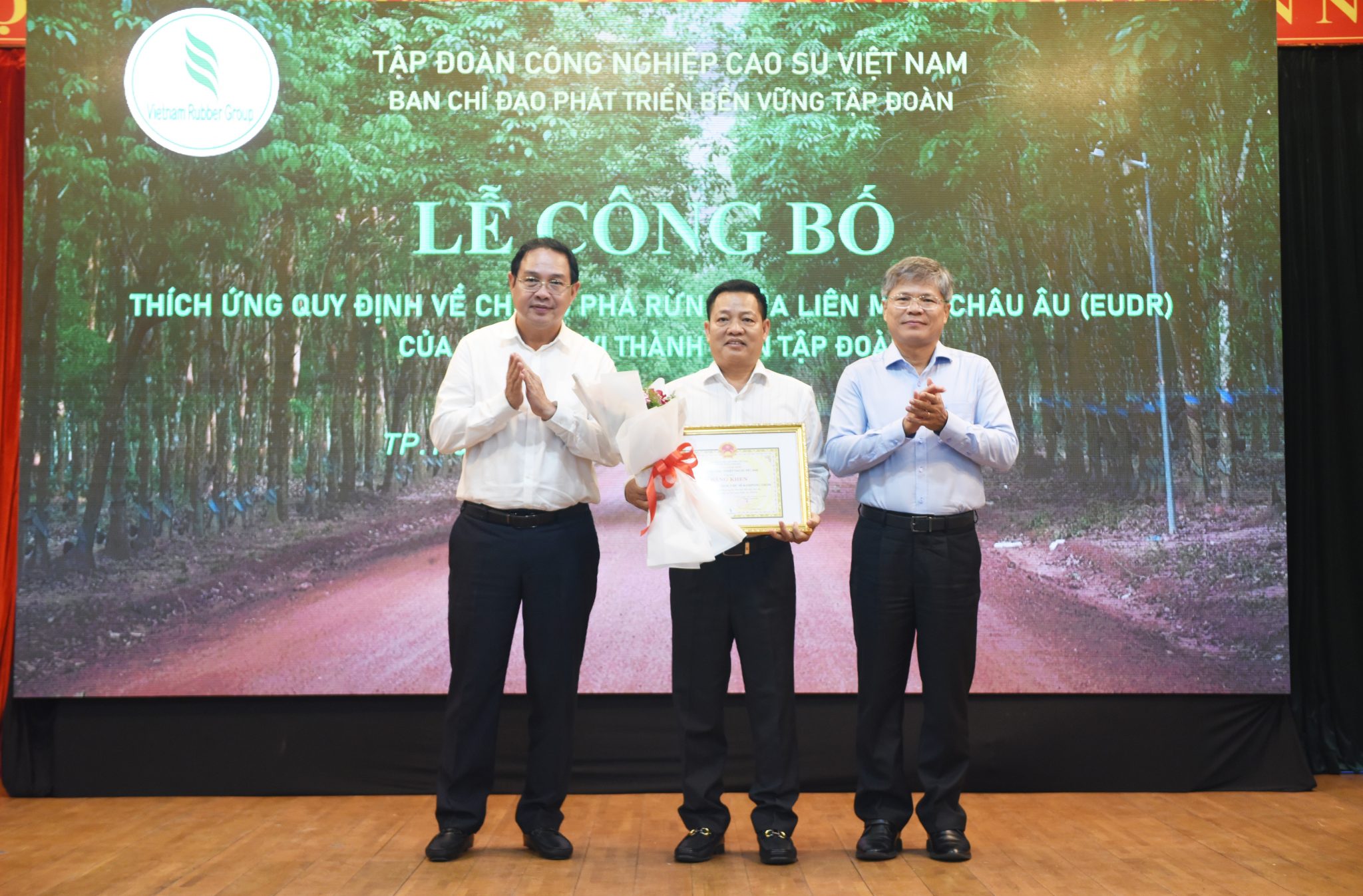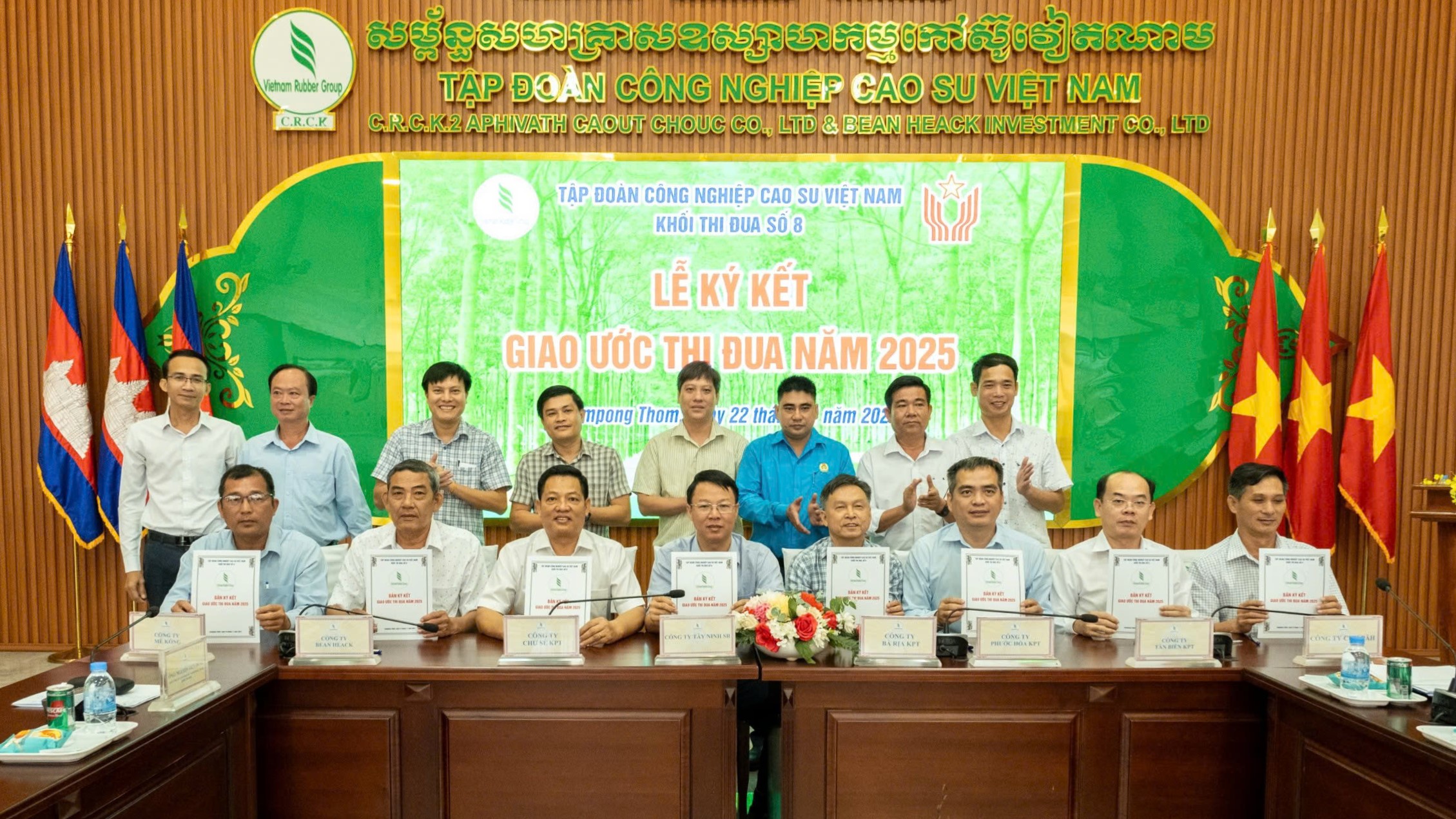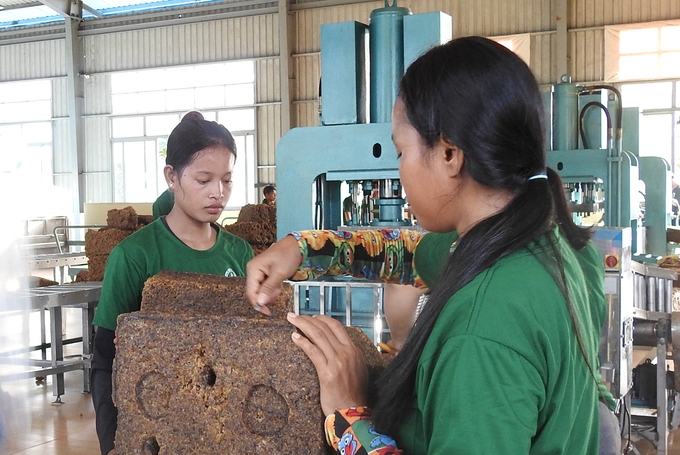CSVN – After 15 years of establishment and development, Chu Se Kampong Thom Rubber Company has achieved remarkable economic efficiency. To ensure stable and sustainable growth, the company has set a production roadmap from 2024 to 2060, aiming to maintain an average yield of 2 tons/ha. The company targets a stable profit margin of 32% on revenue and 17% on equity annually. The revenue structure is projected to remain stable with 54% from rubber and 46% from timber throughout the sustainable development cycle.

The Chu Se Kampong Thom Rubber Company headquarters is situated in the heart of extensive rubber plantations
Developing a production roadmap spanning from 2024 to 2060
Nguyễn Tiến Dũng, General Director of Chu Se Kampong Thom Rubber Company, revealed that the company currently manages 16,268.68 hectares of rubber plantations. In 2024, the estimated output is expected to reach 30,660 tons, with an average yield of 1.9 tons per hectare. To date, the company’s rubber cultivation area is concentrated from the 3rd to the 8th tapping age. According to the technical regulations, the rubber tapping cycle in Laos and Cambodia averages 17 years (ranging from 15 to 19 years). The total replanting period is 10 years (averaging 1,626.87 hectares per year), in which case the business area in the period 2038-2040 is about 4,258.83 hectares, with an estimated output of about 6,388-7,885 tons of rubber. Regarding the exploitation and processing roadmap until 2060, the company will replant new rubber trees starting from 2027 to 2044 (18 years). Caring for and maintaining the replanted rubber gardens from 2026 to 2048 (23 years), the time from replanting and caring for the rubber gardens to harvesting rubber is 7 years. Harvesting timber follows the replanting schedule of rubber trees from 2027 to 2060.
Constructing a wood processing plant with a capacity of 150,000 cubic meters per year
According to the plan, in the first phase, the replanting cycle 1 from 2026 to 2042 (17 years), the company’s estimated rubber wood production is 2,236,503 m³. The average annual production of the project is 131,559 m³. In the second phase, harvesting rubber wood from planted forests from 2044 to 2060, the estimated wood production is 1,457,947 m³. The average annual production of the project is 80,997 m³. The total estimated wood harvest for both phases is 4,416,467 m³. The average annual wood harvest is 110,412 m³. From 2051 to 2060, the company will harvest the second cycle of rubber trees and simultaneously convert the plantation to hybrid acacia, with a conversion area of 10,449 hectares by 2060.
With a projected annual rubber wood supply of over 110,412 m³ from the project, and considering the availability of rubber wood from other companies within a 150 km radius, the estimated raw material supply for the plant when it is operational is expected to exceed 150,000 m³ per year. With this capacity, the company plans to invest in a wood processing plant with an annual capacity of 150,000 m³. The plant construction plan will be carried out in collaboration with a consulting company to study and develop a wood processing plant project, considering the scale, geographical location to meet the region’s raw material capacity and the company’s investment capital. The company plans to invest in a wood processing plant in industrial zones bordering Cambodia, where a pre-processing workshop will be built to be transported for further processing at the wood processing plant in Vietnam.
The company is set to complete the construction of a pre-processing workshop in 2026. The wood processing plant in Vietnam, with a total capacity of 150,000 m³ per year, is scheduled for completion in two phases, both in 2026.
BÌNH MINH
Source: Rubber Magazine








